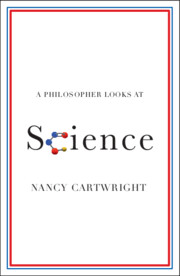Book contents
1 - Theory + Experiment Do Not a Science Make
Published online by Cambridge University Press: 10 June 2022
Summary
Science has undoubtedly produced remarkable achievements from deep theories to technological devices to new ways to measure things. These achievements, I claim, are secured by a dense interwoven net of scientific constructions that constrain and support each other – the concurrent, mutually feeding back-and-forth development of ideas, concepts, theories, experiments, measures, middle-level principles, models, methods of inference, research traditions, data and narratives that make up a scientific endeavour, with rich interconnections with other bodies of work on very different topics that also constrain and support it.
Information
- Type
- Chapter
- Information
- A Philosopher Looks at Science , pp. 12 - 79Publisher: Cambridge University PressPrint publication year: 2022
